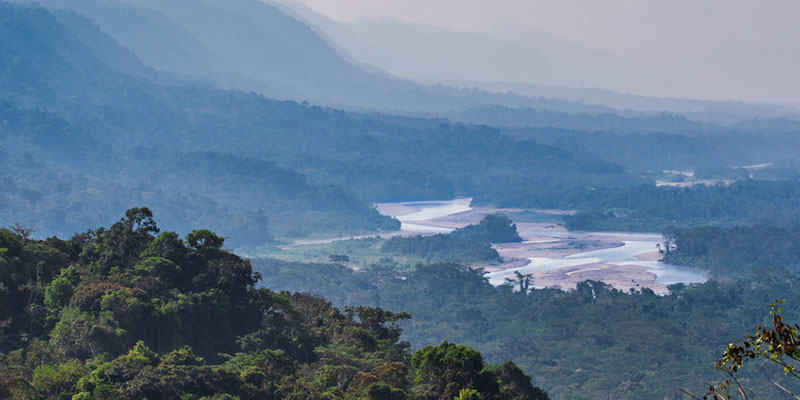Watersheds play an important role in water resilience by slowing the progress of water to oceans, encouraging absorption.
Water resilience is not just the ability to bounce back from stressors, but also the ability to adapt systems to deal with future stress
What exactly does resilience mean? The first use of the word is attributed to Francis Bacon, a 17th-century statesman and philosopher who used it to describe echoes. So, in its origins, the word meant to bounce back.
But in the context of sustainability, defining resilience isn’t as easy. In the 1960s and 1970s, resilience was introduced as a term within ecological science, but by the 2000s, the term broadened to include social-ecological systems as the water-energy-food (WEF) security nexus approach began to take root.
While narrow definitions were more precise, they were less useful in interdisciplinary discussions of global issues, and more inclusive definitions broadened the conversation while becoming more vague.
In general, however, resilience is the ability of social-ecological systems to weather and recover from shocks while remaining adaptable to an uncertain future, and “water resilience” refers to those characteristics in a water system.
Strategies for Water Resilience
To become water resilient, communities, industries, and their water systems will need to upgrade in anticipation of increasingly frequent and significant hurricanes, floods, aging pipe networks, drought, water scarcity, and general climate uncertainty.
Many projects that slow the progress of water toward the ocean are effective, including watershed upgrade and restoration, storage projects such as reservoirs and dams, managed aquifer recharge, and groundwater banking.
Water reuse can transform domestic wastewater into agricultural irrigation water to promote food security. In industry, many kinds of process wastewater can be treated and reused.
Desalination also has become widely viable since operating expenses have dropped and demand has increased, especially in coastal areas, on islands, or above brackish aquifers.
Decentralization’s Role in Water Resilience
Johan Rockström of the Stockholm Resilience Center warns that while it’s popular to centralize water systems, decentralized water systems are frequently more resilient than a single central plant. If one part of a decentralized water system fails, other parts continue operating. But when vertical hierarchies collapse, failure is often catastrophic.
The cost of long pipe networks for centralized infrastructure alone can be crippling. Other drawbacks include:
- High CAPEX for planning, negotiation, and construction
- High energy requirements to pump water long distances
- Pumping station maintenance costs
- Leakage problems
- Eventual replacement costs
Decentralized water systems use smaller plants adjacent to need, dramatically reducing piping needs. With high-quality, local treatment comes the opportunity to reuse wastewater for nonpotable applications like dust reduction, washing, or irrigation of trees, plants, and surrounding agriculture.
Large treatment plants may take months to restart in the case of shutdowns. On the other hand, one small MABR-based wastewater treatment plant on the island of St. Thomas in the Virgin Islands illustrates the resilience built into decentralization. After a Category 5 hurricane, the rest of the island waited months for resumption of service, while Fluence’s energy-efficient MABR plant was started within hours of being hooked up to a generator.
Modular Treatment
While decentralized treatment has long been an ideal for water resilience, modular desalination and wastewater treatment units have now made it practical. One decentralized system in Central China offers a good example. Dozens of service areas along a major highway feature Fluence’s Aspiral™ wastewater treatment plants. The plants, spaced at 50 km intervals, operate independently, but thanks to their smart operation, are under centralized control.
The modular units were remotely manufactured within standard shipping containers, and were trucked in and installed with no need to tie the plant into a piping network. The plants now deliver safe water for reuse locally, increasing resilience in the water-stressed environment.
As another example, one resort in coastal Costa Rica is no longer at the mercy of extended drought. A small plant composed of three Fluence NIROBOX™ seawater desalination modules provides enough fresh water for all operations no matter the weather conditions.
Such containerized modular units are resistant to hurricane winds up to 150 mph and painted with coatings that resist heat, salt air, and corrosion in desert, tropical, and island environments. The units can be uninstalled and moved if demand changes, and capacity can be scaled up efficiently by adding more units.
Contact Fluence to learn more about our efficient, modular wastewater treatment and desalination solutions for water resilience in any setting.

